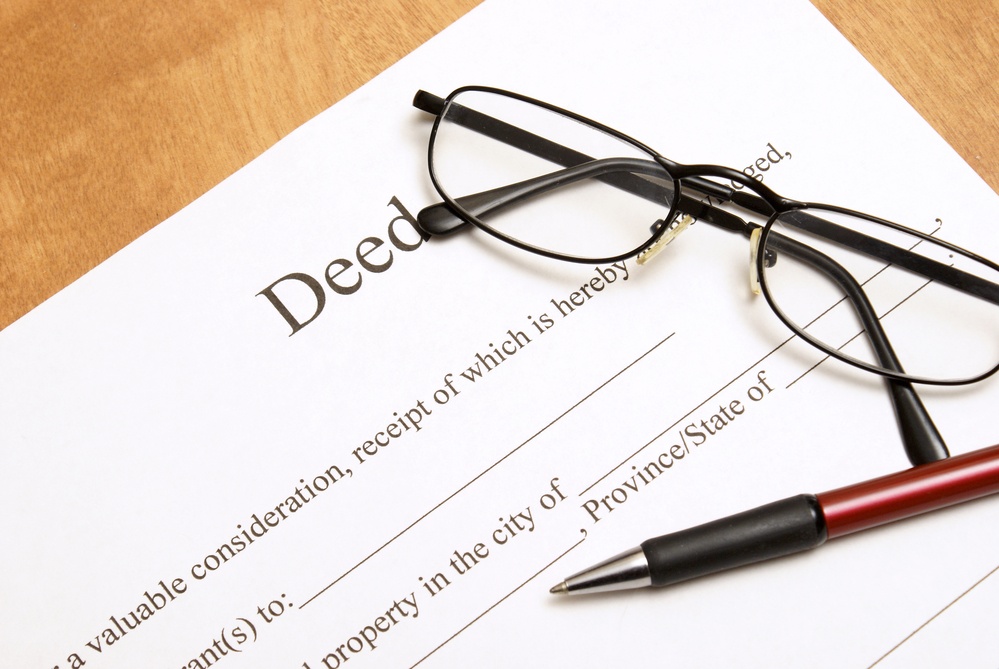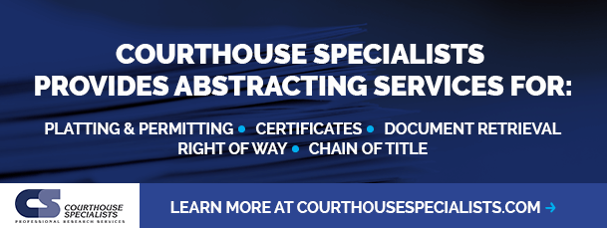 You may be familiar with easements granted to cities and utility providers. These are pieces of your deeded property that remain available to municipalities and utilities to run lines overhead or pipes and cables below ground.
You may be familiar with easements granted to cities and utility providers. These are pieces of your deeded property that remain available to municipalities and utilities to run lines overhead or pipes and cables below ground.
Easement use may include aboveground repair access. However, other deeds of easement exist that allow someone to use part of your property, typically to conveniently access their own property or public lands with no other access.
Some easement deeds may have come with a property when it was sold, such as driveway space shared by a neighbor or access roads in the rear. In any case, you need to know some details about easement deeds because the right to land use is a common legal dispute between individuals or organizations.
Defining the Term Easement Deed
A deed is a legal document granting rights to a specific property. An easement deed allows a party that is not the owner to use a portion of the land. It is a written agreement between two parties that spells out what part of the property is available for access and how it may be used.
Since you are granting an easement to your land, you can set any terms and conditions you like. The land may not be used any other way and any property not included in the easement is not available to the other party.
Also, the party granted the easement may not pass that right to use your property to a third party depending on the type of easement deed regulating that portion of the property.
Different types of easement deeds are defined by how the easement is created and regulated.
Types of Easement Deeds
There are up to five types of easement deeds depending on how they are defined by the deed and state law.
- Easement in Gross - you allow others to use part of your property according to your terms and conditions. No other part of your property may be used, and the easement deed cannot be passed to another party.
- Appurtenant Easement - you attach the easement rights to the property such that when the deed owner sells his property, the easement deed and rights to the apportioned property are sold with it. In other words, the easement rights become part of the deed owners property. It's important to specify exactly how the easement may be used so the deed owner cannot use it for something that you don’t want.
- Affirmative and Negative Easement - An affirmative easement allows the deed owner to use the easement for anything he or she wants. A negative easement contains restriction clauses that decree the exact use that may be made of the property.
- Express Grant and Easement by Implication - An express grant allows another party the use of your land. Alternatively, an easement by implication is a situation in which you sell your property but retain the right to use it. An example is retaining the right to use a cable running through the property even though you no longer own the land.
- Equity and Prescriptive Easement - Both equity and prescriptive easements are “fairness” easements meant to provide fair access to another's property when no other exists. Equity of fairness easements, also called easements of necessity is supplied to a property with no value without access. You grant equity of fairness to allow access to the property across land you own. A prescriptive easement allows the regular use of your property without your express permission, which typically occurs when your property was in use continuously without your objection.
Whenever purchasing property, always research the deed for easements and determine the type before buying the land. Prescriptive easements, in particular, can result in unwelcome surprises for a new owner.
The Purpose of Easement Deeds
As with most legal documents, the primary purpose of an easement deed is to put an agreement between a landowner and a second party about how a portion of land may be used. Before creating an easement deed or when considering a property that includes easements, consult a real estate attorney or another expert to help you draft or understand such deeds.
Besides allowing access to property that cannot otherwise be conveniently reached, a deeded easement serves other purposes, including utility, drainage, driveway, and lake access. In each case, there is a party desiring the right to use another’s property in a limited way.
The Benefits of Easement Deeds
Depending on state law, easement deeds give you the right to allow or restrict the use of any portion of your land. If you are granting access, you can restrict that access to specific purposes.
- You may agree to a deed of easement for your neighbor to use part of your land as a driveway to his own property.
- You can restrict land use for conservation purposes and prevent commercial development.
- Historical easements can prevent an owner from altering the property or changing the design of any buildings.
In all cases, the landowner retains some control in areas where trespass, even inadvertent, may occur as another party attempts to reach property beyond the landowner’s or has need of additional space for parking or planting.
How Easement Deeds Impact Property
The impact of an easement deed on a parcel of land depends on the deeded use and potential future changes. If you agree to an easement for another landowner to access property on foot but neglect to place restrictions, you may be required to allow that landowner to drive across your property along the easement. If you decide to build an in-ground swimming pool, the discovery of an easement deed can derail those plans.
The last sentence brings up a potential issue. Not all easements are recorded. If they have been recorded, they can be lost after many years or changes of land ownership. If you purchase property with an eye towards development, the discovery of a lot or unrecorded easement deed, which is still a legal document, can cause problems.
Always ask for a current owner’s survey, which should reveal any unrecorded easements. If one is not available, it is worth it to order and pay for a new survey. Review all easement deeds to determine what type of easement is granted and whether it is still in force.
If the original party to the deed has died or sold the property, the easement may no longer apply. Alternatively, the easement deed may remain in force if the agreement was made for a specific number of years or is granted to an individual and the individual’s heirs and assigns.
Easement deeds provide a valuable tool to grant or restrict land use by a non-owner. They are legal contracts enforceable by law. There are different types of easement deeds available, depending on the kind of access or restriction, or the amount of time the easement remains in place before it is extinguished.
A savvy land buyer requests a current owner’s survey or orders one to prevent difficulties in land use after the purchase is complete.






















